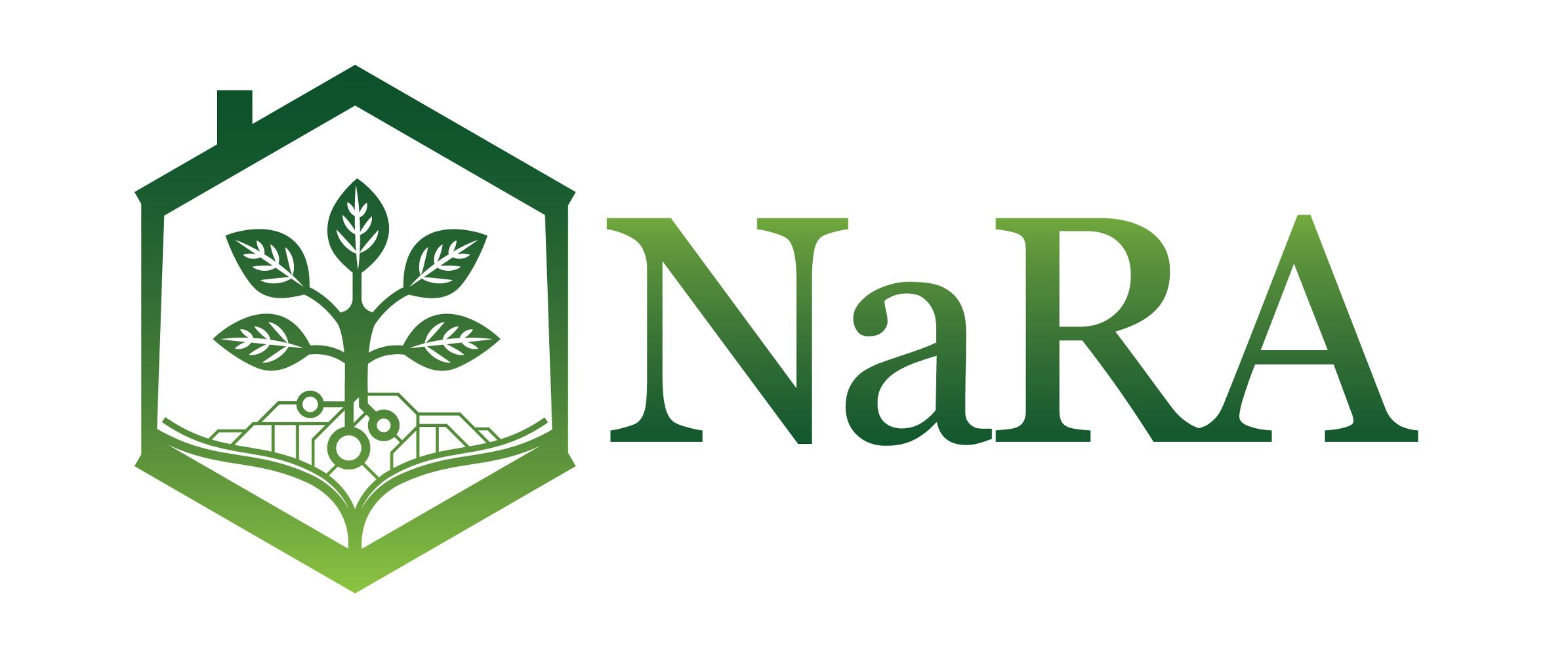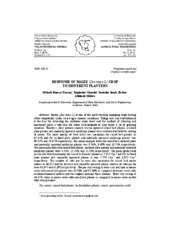Response of Maize (Zea Mays L) Crop to Different Planters
Odgovor kukuruza (Zea Mays l) na različite sejalice
| dc.contributor.author | Narang, Mahesh Kumar | |
| dc.contributor.author | Chandel, Rupinder | |
| dc.contributor.author | Thakur, Surinder Singh | |
| dc.contributor.author | Mishra, Abhinab | |
| dc.date.accessioned | 2015-07-03T13:26:39Z | |
| dc.date.available | 2015-07-03T13:26:39Z | |
| dc.identifier.uri | http://arhiva.nara.ac.rs/handle/123456789/597 | |
| dc.description.abstract | Maize (Zea mays L) is one of the most versatile emerging crops having wider adaptability under varied agro-climatic conditions. Tillage and crop establishment is the key for achieving the optimum plant stand and the method of planting and machinery plays a vital role for better establishment of crop under a set of growing situation. Therefore, three planters namely tractor operated raised bed planter, inclined plate planter and manually operated multicrop planter were evaluated in field for sowing of maize. The mean quality of feed index was maximum for raised bed planter as 82.04% and for inclined plate planter and manually operated multicrop planter was 80.83% and 76.67% respectively. The mean multiple index for raised bed, inclined plate and manually operated multicrop planter was 9.26%, 6.39% and 10.75% respectively. The mean miss index for raised bed planter, inclined plate planter and manually operated multicrop planter were 8.70%, 12.78% and 12.58% respectively. The mean grain yield per ha was found maximum for raised bed maize planter as 7.017 t.ha-1 and for inclined plate planter and manually operated planter it was 5.778 t•ha-1 and 6.097 t•ha-1 respectively. The number of cobs per ha were also maximum for raised bed maize planter as 66,431 and for inclined and manually operated planter number of cobs per ha were 61,945 and 62,992 respectively. The per cent saving in labor cost and time in maize sown with raised bed planter was 89.90% and 91.80% as compared to maize sown with traditional manual method and was highest amongst three planters. There was saving of 10-15% water in maize sown with raised bed planter as compared to maize sown on flat with other planters. | en |
| dc.description.abstract | Kukuruz (Zea mays L) je jedan od najrasprostranjenijih useva koji se lako prilagođava različitim agro-klimatskim uslovima. Obrada i setva su ključni za postizanje optimalnog stanja useva. Zato su ovde ispitivane dve traktorske i jedna ručna sejalica. Indeks srednjeg kvaliteta bio je najveći kod setve u leje (82.04%), kod sejalice sa nagnutom pločom i ručne sejalice iznosio je 80.83% i 76.67%, redom. Srednji višestruki indeks za sve sejalice, istim redom, iznosio je 9.26%, 6.39% i 10.75%. Srednji indeks gubitaka bio je 8.70%, 12.78% i 12.58%, redom. Srednji prinos zrna bio je 7.017 t.ha-1, 5.778 t•ha-1 i 6.097 t•ha-1, redom. Broj klipova/ha iznosio je 66.4, 61.95 i 62.99, redom. Smanjenje troškova i vremena rada iznosilo je 89.9% i 91.8% u poređenju sa tradicionalnom ručnom setvom. Ušteda vode od 10-15% je ostvarena kod kukuruza sejanog sejalicom za leje u poređenju sa setvom na ravnu podlogu sa druge dve sejalice. | sr |
| dc.subject | raised bed planter | en |
| dc.subject | inclined plate planter | en |
| dc.subject | maize | en |
| dc.subject | germination | en |
| dc.subject | yield | en |
| dc.subject | sejalica u leju | sr |
| dc.subject | sejalica sa nagnutom pločom | sr |
| dc.subject | kukuruz | sr |
| dc.subject | nicanje | sr |
| dc.subject | prinos | sr |
| dc.title | Response of Maize (Zea Mays L) Crop to Different Planters | en |
| dc.title.alternative | Odgovor kukuruza (Zea Mays l) na različite sejalice | sr |
Files in this item
This item appears in the following Collection(s)
-
Issue 2015-2.
www.jageng.agrif.bg.ac.rs/files/casopis/PT_02-2015.pdf



